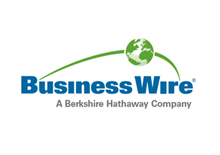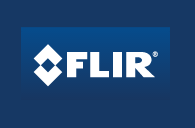Ports of Los Angeles and Long Beach: New Clean Diesel Technology Key Part of Future Plan, Offers Fastest, Lowest Cost Route to Emission Reductions
SACRAMENTO, Calif., Sept. 18, 2017 /PRNewswire-USNewswire/ -- As the Ports of Los Angeles and Long Beach (POLA/POLB) begin final consideration of their updated 2017 Clean Air Action Plan (the "Plan"), regulators must embrace the future role of diesel technology in the global goods movement sector and the substantial, immediate clean air and climate benefits that the latest clean diesel technologies offer.
Because of its unique combination of power, performance, efficiency, reliability, durability and availability, diesel power is projected to remain the dominant technology for global goods movement on land and sea for the next period covered by this plan. The newest generation of clean diesel technology achieves near-zero levels of emissions for nitrogen oxides and particulate matter, while also maintaining an efficiency and performance advantage over other fuels.
"Clean diesel has a proven track record for the POLA/POLB, and that's one reason we know it will be successful in the future," said Allen Schaeffer, executive director of the Diesel Technology Forum (the Forum). "The majority of the emission reduction benefits realized when the Clean Truck Program was implemented in 2012 came from truck operators choosing clean diesel power over alternative fuels."
Schaffer continued: "As currently constructed, this updated Clean Air Action Plan must do more to recognize and leverage strategies like accelerated adoption of cleaner diesel engines and equipment that achieve proven near-term benefits. One of the key uncertainties of the plan is technology availability in the form of the timing, market success and availability of any alternative fuels and powertrains in the Port service setting. The potential for slowed or impaired progress in achieving clean air and greenhouse gas emissions reduction targets without a balanced fuel, technology and timeline approach is real."
As the port considers future technology investments upgrading or replacing older vehicles, equipment, switch locomotives and harbor craft with the latest clean diesel technology will do the most to deliver needed emission reductions to sensitive communities most in need of emission reductions in a timely manner.
According to the U.S. Environmental Protection Agency's (EPA) most recent National Port Strategy Assessment (December 2016):
-- Replacing a model year 2007 Class 8 drayage truck with a model year 2010
or newer diesel drayage truck can reduce NOx emissions by 221 lbs.
Multiplied over the 60 percent of the truck fleet that does not come
with technology to meet the model year 2010 standard, the port could
reduce emissions by 2.1 million lbs. of NOx.
-- Replacing a single old engine that powers a switch locomotive with a
Tier 4 model can reduce NOx emissions by 37,000 lbs. of NOx and 974 lbs.
of particulate matter emissions. Replacing the older engine in the wide
variety of marine workboats including tugs and ferries can have equally
significant emissions reductions.
"These significant emission reductions could be delivered immediately by technology that is sitting on dealer lots today, which does not require the lengthy and expensive buildout of refueling or recharging infrastructure, or the widespread adoption of technologies not yet available at a commercial market scale," said Schaeffer. "Further, the POLA/POLB can immediately enhance this proven clean air performance and achieve significant greenhouse gas reduction capabilities by utilizing low-carbon renewable diesel fuel in all its diesel engines and equipment."
More recent demonstration projects show new concepts for clean diesel power in drayage operation. Drayage trucks with downsized diesel engines integrated with battery electric drive modes for on-port operations and a geo-fence enabled ability to switch to diesel power in off-port settings, give it a best-of-both worlds performance.
"Based on this record," said Schaeffer, "we are confident that the newest generation of clean diesel technology is poised to contribute to even more emission reductions and help the POLA/POLB achieve their climate and clean air goals and power a modern, world-class near-zero emissions freight and goods movement system for the future."
Estimated MY Anticipated NOx Reduction Total Cost of Achieving
2007-2009 (lbs.) Reductions
Truck
Population Replacement Strategy Estimated Cost of Technology Currently Available
------------ -------------------- ------------------------- ---------------------------- ----------------------- -------------------
9,600 MY 2010 Diesel 2.1 million $110,000 $1.056 billion Yes
----- -------------- ----------- -------- -------------- ---
9,600 Battery Electric 2.5 million $220,000 $2.1 billion No
----- ---------------- ----------- -------- ------------ ---
SOURCE: Nation Port Strategy Assessment: Reducing Air Pollution and Greenhouse Gases at U.S. Ports, U.S. EPA.
-------------------------------------------------------------------------------------------------------------
Truck Anticipated NOx Reduction
Replacement (lbs.)
Strategy
------------ -------------------------
Replace
MY
2007-2009
with MY
2010
Diesel 221
--------- ---
Replace
MY 2010
with
Zero
Emission 44
-------- ---
SOURCE: Nation Port Strategy Assessment:
Reducing Air Pollution and Greenhouse
Gases at U.S. Ports, U.S. EPA. Page 46.
----------------------------------------
Replacing Anticipated NOx Reduction Equivalent to Replacing MY
Older (lbs.) 2007 Dray Trucks with MY
Engines 2010 Model
with
Tier 4 Option
------------- ---
Tug
Boat 96,000 434
---- ------ ---
Switch
Locomotive 37,000 167
---------- ------ ---
Ferry 62,000 280
----- ------ ---
SOURCE: Nation Port Strategy Assessment: Reducing Air
Pollution and Greenhouse Gases at U.S. Ports, U.S. EPA.
-------------------------------------------------------
When California's Clean Air Action Program was implemented in 2012, nine out of every 10 trucks required to meet the model year 2007 emissions standard were powered by diesel, according to previous emission inventories. The most recent emissions inventory published by the Port of Long Beach estimates that 95 percent of drayage truck calls were performed by drayage trucks powered by diesel engines.
Since 2012, a new, near-zero NOx standard was established for model year 2010. According to the Clean Air Action Plan Update, about 60 percent of the fleet - roughly 9,600 California trucks - do not have the technology to meet the latest near-zero tailpipe emissions standard set for model year 2010.
According to the Forum's most recent analysis, only around 23 percent of California's commercial heavy-duty diesel trucking fleet - the largest in the United States at nearly a million vehicles - currently use the newest, cleanest diesel technology. The national average is 30 percent adoption.
"Excluding the latest clean diesel trucks from eligibility in a potential preferential access scheme will ensure substantial delays in achieving emission reductions for sensitive communities," said Schaeffer.
Read the Diesel Technology Forum's full comment on the Clean Air Action Plan Update here.
About The Diesel Technology Forum
The Diesel Technology Forum is a non-profit organization dedicated to raising awareness about the importance of diesel engines, fuel and technology. Forum members are leaders in clean diesel technology and represent the three key elements of the modern clean-diesel system: advanced engines, vehicles and equipment, cleaner diesel fuel and emissions-control systems. For more information visit www.dieselforum.org.
Contact:
Sarah Dirndorfer
sdirndorfer@dieselforum.org
301.668.7230 (o) 301.706.8276 (c)
(View this press release online)
View original content with multimedia:http://www.prnewswire.com/news-releases/ports-of-los-angeles-and-long-beach-new-clean-diesel-technology-key-part-of-future-plan-offers-fastest-lowest-cost-route-to-emission-reductions-300521590.html
SOURCE Diesel Technology Forum



